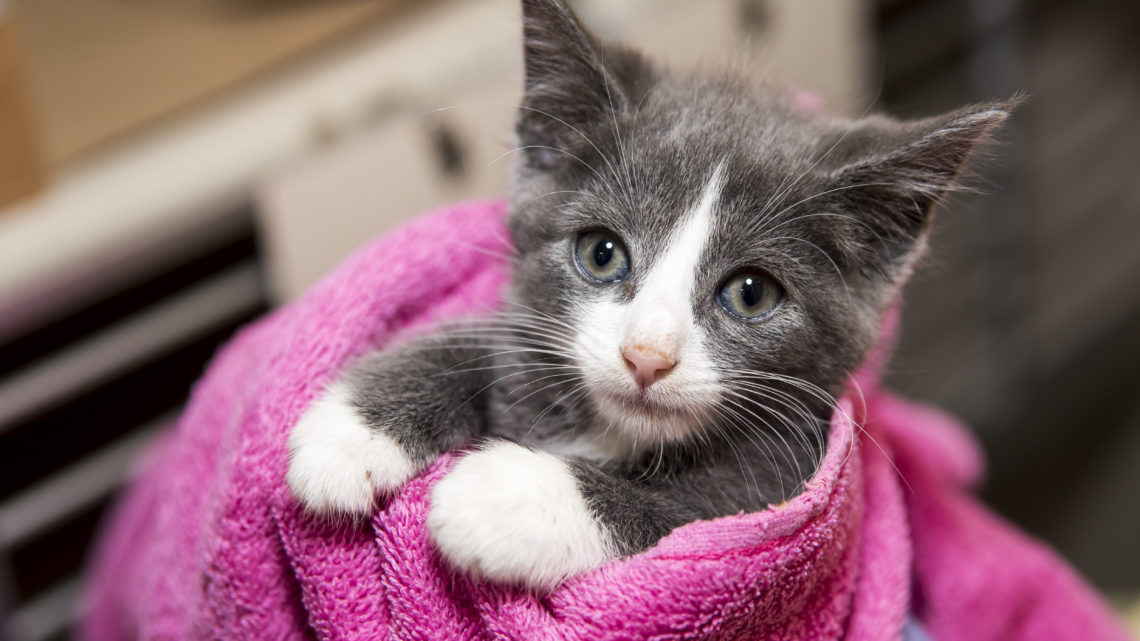Kitten season starts in April and lasts through September. This means shelters and rescues are overwhelmed with homeless kittens during the warm weather months. Here’s how one animal welfare organization handles the situation.
Stray and feral cats abound, and because most of them aren’t spayed or neutered, they have countless litters of kittens, starting in the spring. In fact, shelters and rescues call the warm weather months from April through September “kitten season”, because that’s when their facilities are overrun with kittens in need of homes. The American Society for the Prevention of Cruelty to Animals (ASPCA) is one organization that has developed a unique protocol for coping with the situation – by maintaining a special nursery just for newborn kittens.
Caring for neonatal kittens
According to the ASPCA, approximately 3.2 million cats enter shelters nationwide every year, but it is nearly impossible to identify how many kittens are born each season. In 2014, the ASPCA opened its very own Kitten Nursery in New York City, which serves as the city’s first high-volume kitten nursery, providing care for newborn kittens that can’t survive on their own, and serving both nursing cats with litters and orphaned kittens taken in by the Animal Care Centers of NYC.
Looking after newborn kittens is a challenging job because they need constant care. “Nurseries like ours are rare, because caring for neonates is a time- and resource-intensive process,” says Lourdes Bravo, Senior Manager of the ASPCA’s Kitten Nursery. “Many of the kittens need round-the-clock care – some are only days old – so staff are needed 24/7 to take care of them. Duties range from bottle-feeding and cage cleaning to food preparation. Kittens receive care until they are old enough to be microchipped, vaccinated and spayed/neutered.”
By the time they’re eight weeks old, the kittens are ready to be adopted out through the ASPCA Adoption Center or local rescue groups. “We have knowledgeable adoption counselors who help prospective adopters find the kittens that are best for them and their lifestyles,” says Lourdes. “We have been able to find caring homes for all the kittens.” To date, the Kitten Nursery has saved over 5,000 newborn and at-risk kittens.
To date, the Kitten Nursery has saved over 5,000 newborn and at-risk kittens.
What happens in the “off-season”?
When the fall rolls around and kitten season slows down, ASPCA’s Kitten Nursery closes its doors until the following year. But that doesn’t mean work stops – far from it. “We begin preparing for the next kitten season, which includes reviewing our operations protocols, holding debriefing sessions with staff and partner organizations, cleaning the facility from top to bottom, and analyzing the data of kittens in our care,” says Lourdes. “By the time we are ready to open our doors to new kittens next April, we have made all the necessary preparations for an even more successful kitten season.”
How can you help?
1. Adopt
“The best way to help during kitten season is to make adoption your first option,” says Lourdes. “Visit ASPCA.org/kittens to take the pledge and search for local shelters near you.”
2. Volunteer or donate
If you’re not in a position to adopt, look into volunteering at your local shelter or rescue, or make donations of money or supplies. If you’re donating supplies, contact the facility first to find out what they’re most in need of.
3. Foster
Opening your home to foster kittens is another wonderful way to help. “The ASPCA has a group of dedicated volunteer fosters, both in New York City and Los Angeles,” says Lourdes (see sidebar on page xx). “They care for kittens that will benefit from being in a home environment until they’re ready for adoption. You don’t need to live near a kitten nursery to foster kittens — most shelters and rescues welcome foster homes during kitten season.
Lourdes states that newborn kittens are among the most vulnerable of homeless animals, especially in cities like New York. But thanks to the ASPCA’s Kitten Nursery, thousands of kittens have already been saved and adopted into forever homes. Now, with the arrival of spring, Lourdes and her team are gearing up for another kitten season at the nursery, and are ready and waiting to rescue more lives. “It is imperative for us – and certainly in line with our mission – to do what we can to help save and protect these kittens.”
With the arrival of spring, Lourdes and her team are gearing up for another kitten season, and are ready and waiting to rescue more lives.
Kitten foster program in LA
New York City isn’t the only place with a kitten overpopulation problem. In the fall of 2016, the ASPCA launched a Kitten Foster Program in Los Angeles. “The ASPCA is urgently looking for LA residents who can temporarily open up their homes to foster kittens until they’re ready for adoption,” says Jesse Oldham, Senior Administrative Director of the ASPCA’s Community Outreach team. “We supply medical services, food, litter and all the support you need – we will even deliver the kittens right to your home.” To learn more, visit ASPCA.org/FosterLA

The ASPCA Field Investigations team rescuing kittens during the natural disaster in St. Croix.
Humane management and education
The ASPCA supports programs designed to humanely manage feral cat populations, thereby helping to reduce the numbers of kittens born each year. “These include Trap-Neuter-Return-Monitor (TNRM) and Working Cat programs,” says Jesse. “We encourage cat advocates, animal shelters and rescues, local government officials, and the public to work together to implement these programs within their communities.”
The organization also offers educational material such as workbooks and videos to help shelters and rescues across the country relieve the burden of kitten season in their own areas. These organizations are encouraged to host their own TNRM workshops, thereby helping to reduce numbers of strays and ferals while improving the lives of existing cats and kittens.







No Comment